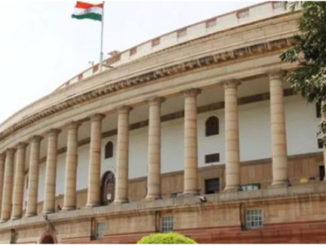
By Murli Menon
I turned vegan on 2nd October 1996 after suffering a near fatal head-on collision with a truck driven by a drunk driver. After 14 years of being on a strict plant-based diet, I decide to research plant based street food for my forthcoming book ZeNLP vegan recipes Compassionate Cookbook. I decided to travel to the Kumbh Mela (pilgrimage) in 2010, which happens every 12 years. I knew that as millions of pilgrims gathered at the Kumbh Mela in Haridwar in 2010, street food vendors would follow and I could record and research many vegan recipes and photograph vegan street food at Haridwar, saving me time and money. I planned to raft down the Ganges from Kaudiyala to Rishikesh while also going to the Kumbh Mela in Haridwar.
The journey from Ahmedabad to Haridwar was uneventful except for the beautiful sunset clicked over the hills of Mount Abu. The train was crowded with devotees proceeding to Haridwar for the Kumbh Mela to reach before 14th January, which was the most auspicious day to take a dip in the Holy Ganges since 1998. By a meaningful coincidence, at Haridwar station I met three young ladies, each from England, Netherlands and USA, who were seeking directions to go to Rishikesh! Soon, all four of us were in a taxi to Rishikesh. The journey took us through the outer fringes of the Rajaji National Park, where we could sight some stump-tailed macaques! After checking in at the Garhwal Mandal guest house at Rishikesh, we proceeded to Kaudiyala to complete the thrill of river rafting while returning to Rishikesh. Body surfing while hanging on to the raft in the ice-cold waters of the river in mid-January was a bone-chilling experience. Kathy, Kristen and Naomi, who were teaching English in China, were travelling to Rishikesh for a break. After returning to Rishikesh, I headed to Haridwar for the Kumbh Mela. “Lakhs” (millions) of pilgrims from all over India had gathered for a once in a lifetime experience. Taking a dip in the freezing waters of the Holy Ganges at 4 AM in mid-January reminded me of my dip at Lake Mansarovar in Tibet! However, it was a boon to my immune system as all my cells got rejuvenated after swimming in the placid waters of this mighty river. It surely is one of the most powerful experiences to discover the power of mother nature. Exploring the impromptu food stalls at the Kumbh as a food detective, searching for 100 per cent vegan delicacies (food which does not contain any product of animal origin or even traces of any animal product) was another aim of my travels for my forthcoming book “ZeNLP-The Power of Veganism.”
The food-stalls at the Kumbh had idlis (soft & fluffy steamed cake made of fermented rice & lentil batter) and dosas (rice and lentil crepe) jostling for space with samosas (triangular shaped dumplings), dhoklas (nutritious Indian meal with a base of rice and fermented chickpea paste), and theplas (latbread made with whole wheat flour, gram flour, millet flour and spice powders). The effects of the severe winter were compounded by the chilly winds and slight drizzle that seemed to pervade Rishikesh and Haridwar in January. Warming up near community bonfires and sipping hot ginger juice (as a strict vegan, I do not drink tea, coffee or consume sugar because of chances of adulteration of these commodities by products of animal origin). Also, I do not consume any factory manufactured food-stuffs, sold across supermarket shelves. As a strict vegan, I avoid all foodstuffs containing caffeine, chlorine, fluorine, nicotine and iodine. I prefer to eat fresh fruits, vegetables, seeds, nuts and grains! I never consume solids after sunset but instead stick to water fasting! Community bonfires are an ideal socialising venue to find out about the latest events and to know the directions to reach the hawkers who sell the most delicious street food in town.
The trip from Rishikesh to Haridwar was like moving in a caravan. Thousands of pilgrims walking barefoot to reach Haridwar on January 14. Along the way, I met peasants from Bhagalpur, Rabaris (Nomadic Pastoral community) from Gujarat, Bauls (Folk singers) from West Bengal, villagers from Andhra Pradesh, sadhus (Hindu monk or ascetic who abandons all his previous life and takes the path of penance and austerity to reach enlightenment) from Uttar Pradesh, and gypsies selling everything from sandalwood-paste to vermillion. It was a “mela” (large crowd) in the proper sense of the word! Most of the pilgrims braved the effects of the cold by sleeping outdoors. Many ingenuous devotees slept on the shores of the river to avoid the early morning rush!
After reaching Haridwar, I woke up at midnight to prepare for the trek to the ghats (staircase) for a dip before the crowd starts to pour in. It was extremely cold and visibility was limited to the first three steps one takes. However, I trudged along the narrow path to reach the holy river before dawn and take a rejuvenating bath in the rapids as the first rays of the sun strike the earth. The most exciting part of the experience was the feeling of numbness in the fingers which made buttoning one’s kurta (traditional garment, similar to tunica) an achievement! At the ghats, pink-coloured ghagras (traditional outfits worn by women) of the Rabari women vied for attention with saffron Rajasthani turbans, which were a striking contrast to the sadhus smeared in grey ash. It was a free for all with everyone for himself. Hawkers selling towels had a field day. I planned to travel from Haridwar to Allahabad to complete the next phase of my research on vegan Indian street food.
Being a food detective, it was interesting to know the ingredients that went into Indian street food. I spoke to hawkers, cooks, waiters separately on different days just to reconfirm the ingredients that went into street food. Most of the hawkers were honest and were not aware of my aim in asking the questions, so they replied truthfully. Being a trained ZeNLP master, I could analyse their body language, eye movement and breathing patterns to reject the few outrageous liars. The proof of the banana is in its eating and as I am allergic to even micrograms or even picograms or nanograms of animal products in any food, I could make out the culprits from the aroma of the food.
One of the greatest advantages of being a pure vegan is to be gifted with an extremely sensitive olfactory sense. I can smell a minute gas leak in any apartment of my multi-story building with amazing accuracy. Also, there is an activation of the latent DNA in every cell of the body which makes digestion efficient and increases the blood flow to the palate and activating the taste buds, to make eating a divine experience. Every morsel of food tastes heavenly, be it whole wheat puris (fried in oil) with alu-sabji (cooked in oil) I had in Benaras, hot steaming idlis and coconut chutney I had at Srisailam, steamed vegetable momos, I had at Rishikesh or the mint coriander chatni (seasoning) I had at Jasidih. My taste-buds have taken a life of their own since I turned a strict vegan in 1995.
The wide array of street food being sold at the Kumbh Mela was mind-boggling. However, as I was looking for 100 per cent pure vegan food, I could ignore the vast majority of foods which contained animal products. But there were some small pockets which made lip-smacking vegan food, cooked the traditional way. Fruits and vegetables were aplenty. Be it the many stalls selling fresh sweet-lime juice, nimbu-pani (lime juice) vendors or shops selling almonds, walnuts and raisins. I had the vegan street food only as a part of my research on vegan food. During most of my travels, I opted for fresh fruits, walnuts, and raisins. This diet is known as a raw vegan diet in ZeNLP. Staying in a tent on the banks of the Holy Ganges was a great experience. Waking up at midnight to the soothing, gurgling sounds of flowing water, watching the starlit skies bathed in moonlight in biting cold will be etched on my psyche forever! Meditating on the tiny pebbles that carpeted the banks of the river made one connect to the primordial elements!
Taking a dip in the Holy Ganges on the day of the eclipse was a soothing experience. I could feel the cosmic energy pervading the air as I walked along the river banks to watch the crimson sunset. One could also see the play of the elements as fire, water and earth played their parts to perfection. The fog, mist and frost in the morning representing the earth element, the flowing waters at noon, in the sun’s absence, representing the water element and the crimson sunset was a fitting finale for the fire element. The calmness, serenity, peace and quietness experienced while meditating on a bed of stones while watching the river rapids connect one to the macrocosm is unparalleled. It reminded me of my trek to Kailash Mansarovar along the banks of the Kali River, where I had meditated on giant slabs of stone which were strewn along the river banks. Impromptu showers were my constant companion during my trek through Rishikesh to Haridwar. After spending a week exploring the vegan food here. I returned to Ahmedabad. The photographs of the delicious recipes of street food explain my gastronomic experience at the Maha Kumbh Mela. (Murli Menon, is a travel writer, stress management consultant and author-based at Ahmedabad, India. He is the author of “ZeNLP-Learning through stories” published by The Written Word Publications, “ZeNLP-the power to succeed” published by Sage publications and “ZeNLP-the power to relax” by New Dawn Press. He can be reached at zenlp@rediffmail.com)





Be the first to comment